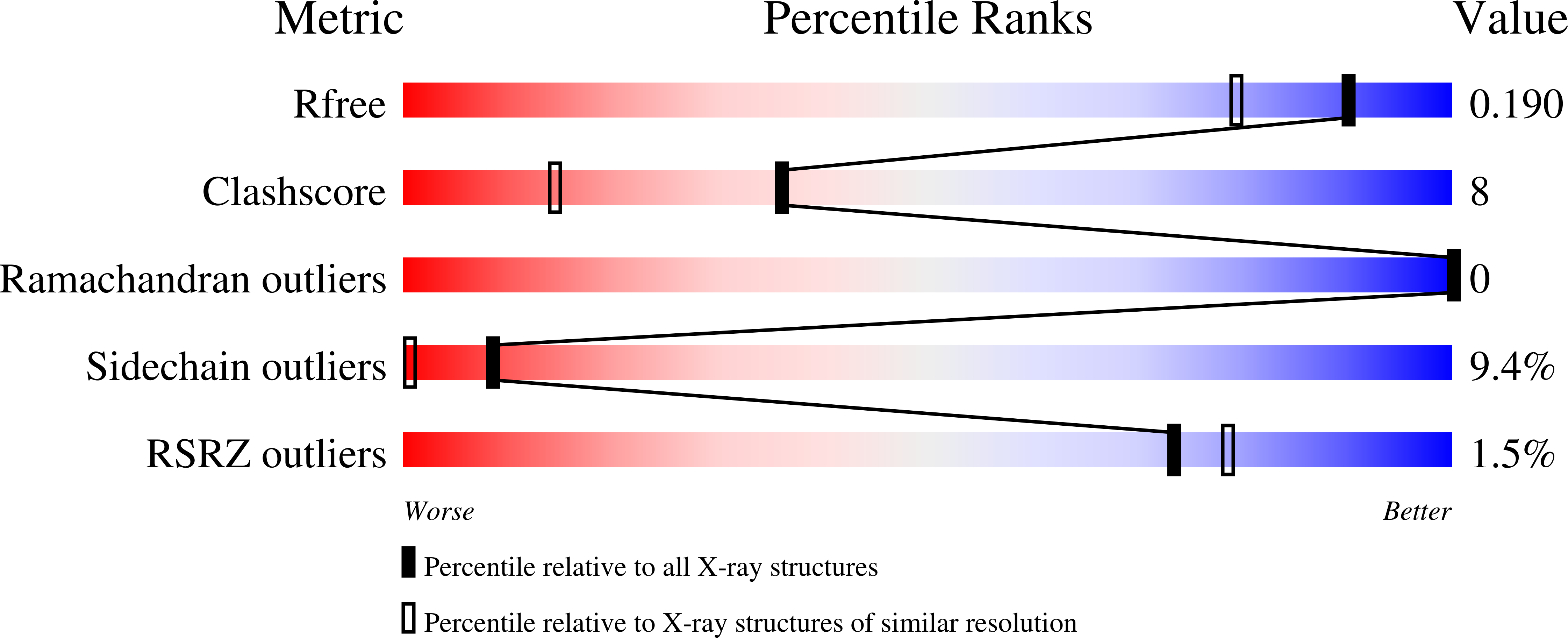Crystal structures of recombinant histones HMfA and HMfB from the hyperthermophilic archaeon Methanothermus fervidus.
Decanniere, K., Babu, A.M., Sandman, K., Reeve, J.N., Heinemann, U.(2000) J Mol Biol 303: 35-47
- PubMed: 11021968
- DOI: https://doi.org/10.1006/jmbi.2000.4104
- Primary Citation of Related Structures:
1A7W, 1B67, 1B6W, 1HTA - PubMed Abstract:
The hyperthermophilic archaeon Methanothermus fervidus contains two small basic proteins, HMfA (68 amino acid residues) and HMfB (69 residues) that share a common ancestry with the eukaryal nucleosome core histones H2A, H2B, H3, and H4. HMfA and HMfB have sequences that differ at 11 locations, they have different structural stabilities, and the complexes that they form with DNA have different electrophoretic mobilities. Here, crystal structures are documented for recombinant (r) HMfA at a resolution of 1.55 A refined to a crystallographic R-value of 19.8 % (tetragonal form) and at 1.48 A refined to a R-value of 18.8 % (orthorhombic form), and for rHMfB at 1.9 A refined to a R-value of 18.0 %. The rHMfA and rHMfB monomers have structures that are just histone folds in which a long central alpha-helix (alpha2; 29 residues) is separated from shorter N-terminal (alpha1; 11 residues) and C-terminal (alpha3; 10 residues) alpha-helices by two loops (L1 and L2; both 6 residues). Within L1 and L2, three adjacent residues are in extended (beta) conformation. rHMfA and rHMfB assemble into homodimers, with the alpha2 helices anti-parallel aligned and crossing at an angle of close to 35 degrees, and with hydrogen bonds formed between the extended, parallel regions of L1 and L2 resulting in short beta-ladders. Dimerization creates a novel N-terminal structure that contains four proline residues, two from each monomer. As prolines are present at these positions in all archaeal histone sequences, this proline-tetrad structure is likely to be a common feature of all archaeal histone dimers. Almost all residues that participate in monomer-monomer interactions are conserved in HMfA and HMfB, consistent with the ability of these monomers to form both homodimers and (HMfA+HMfB) heterodimers. Differences in side-chain interactions that result from non-conservative residue differences in HMfA and HMfB are identified, and the structure of a (rHMfA)(2)-DNA complex is presented based on the structures documented here and modeled by homology to histone-DNA interactions in the eukaryal nucleosome.
Organizational Affiliation:
Forschungsgruppe Kristallographie, Max-Delbrück-Centrum für Molekulare Medizin, Robert-Rössle-Str. 10, Berlin, D-13125, Germany.
















